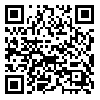BibTeX | RIS | EndNote | Medlars | ProCite | Reference Manager | RefWorks
Send citation to:
URL: http://psj.umsha.ac.ir/article-1-129-en.html
2- MSc of Health Education, Students Research Center, Hamadan University of Medical Sciences, Hamadan, Iran ,
3- Assistant Professor of Health Education, Social Determinants of Health Research Center, Hamadan University of Medical Sciences, Hamadan, Iran
4- Assistant Professor of Health Education, Behavioral Disorders and Substance Abuse Research Center, Hamadan University of Medical Sciences, Hamadan, Iran
5- MSc of Health Education, Students Research Center, Hamadan University of Medical Sciences, Hamadan, Iran
Introduction: Drug abuse is regarded as one of the most important challenges in the field of individual family and community health. Due to ignoring the dangers of drug abuse, considering the driver’s license applicants who are exposed to drugs while driving is necessary. The purpose of this study was to determine predicting factors with drug abuse among applicants for driving license in Hamadan by application of the Theory of Planned Behavior.
Methods: This study was a cross-sectional descriptive-analytic. 388 applicants for driving licenses of 6 Driving School in Hamadan, from July to August 2012 were selected by the cluster sampling. The data were collected using the standard questionnaire based on theory of planned behavior and analyzed using statistical software SPSS version 16, with chi-square test, Pearson correlation and logistic regression.
Results: There was a significant relationship between the experience of drug abuse and the following demographics variables: sex (P=0.001) and marriage status (P=0.046). Also, there was a significant relationship between the experiences of drug abuse and the following variables: intention to drug abuse, having friends who had experienced alcohol, drug abuse and medications addiction treatment, having the experience of alcohol consumption, drug abuse consumption and medications addiction treatment (P<0.05). Logistic regression analysis showed that subjective norms (P=0.003), and perceived behavioral control (P=0.001) were the most influential predictors of intention drug abuse on these pepole.
Conclusion: Subjective norms and perceived behavioral control can be taken into account for predicting risk behaviors and drug abuse prevention programs codification.
Received: 2015/03/30 | Accepted: 2015/06/6 | Published: 2015/11/14
| Rights and permissions | |
 |
This work is licensed under a Creative Commons Attribution-NonCommercial 4.0 International License. |





